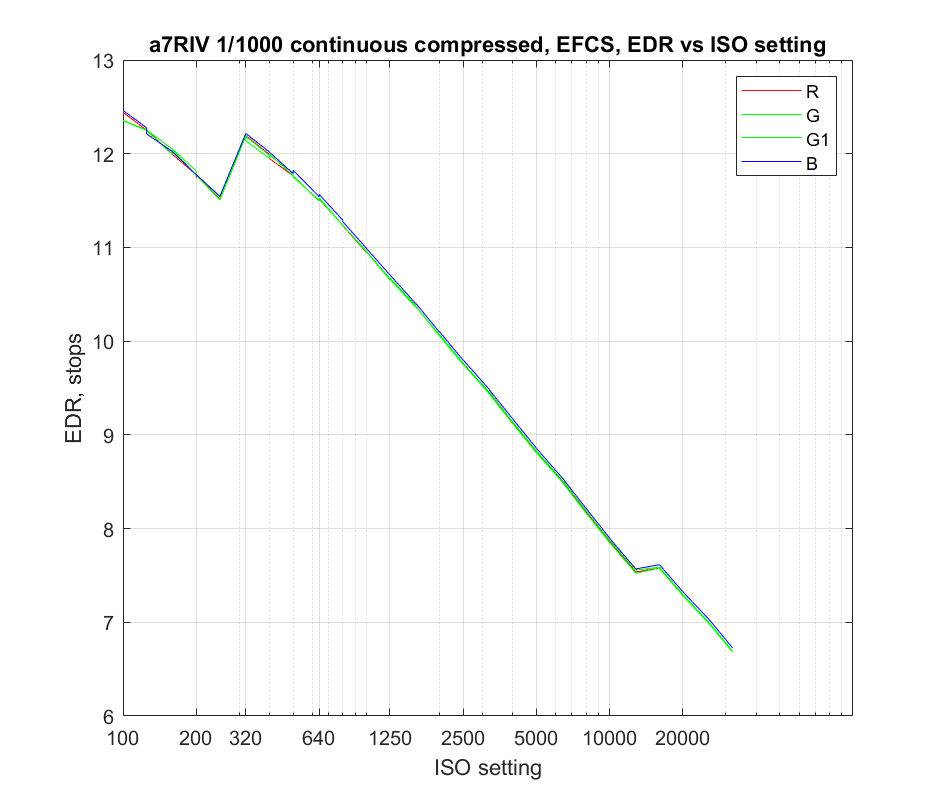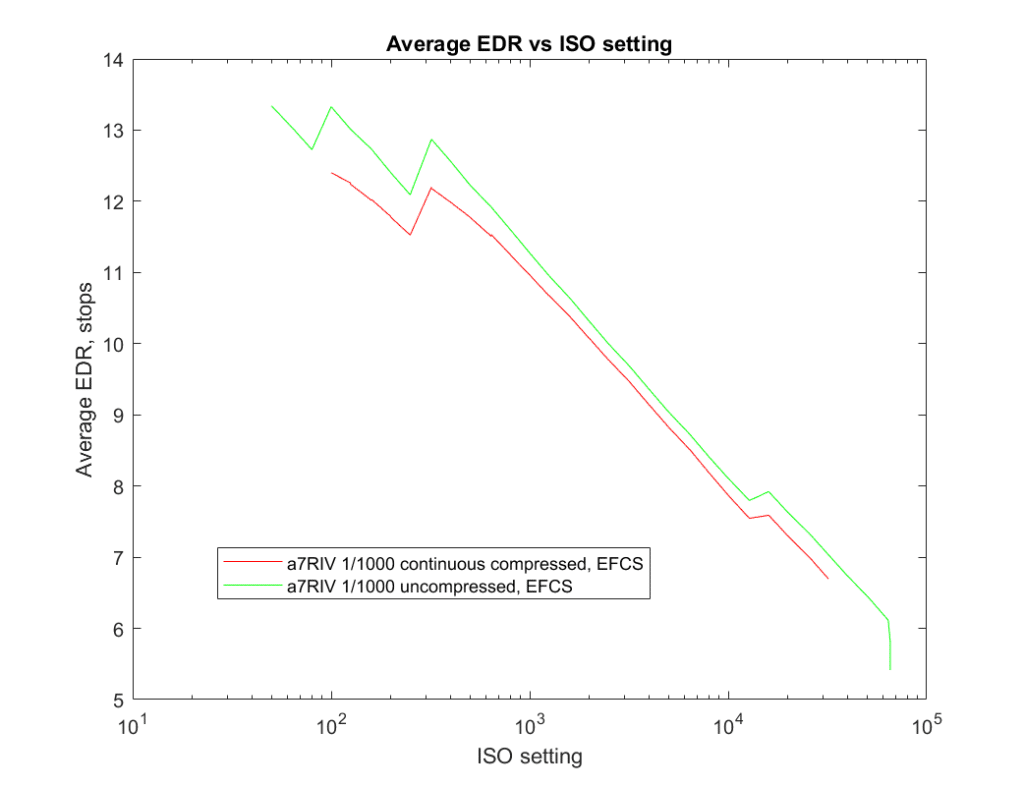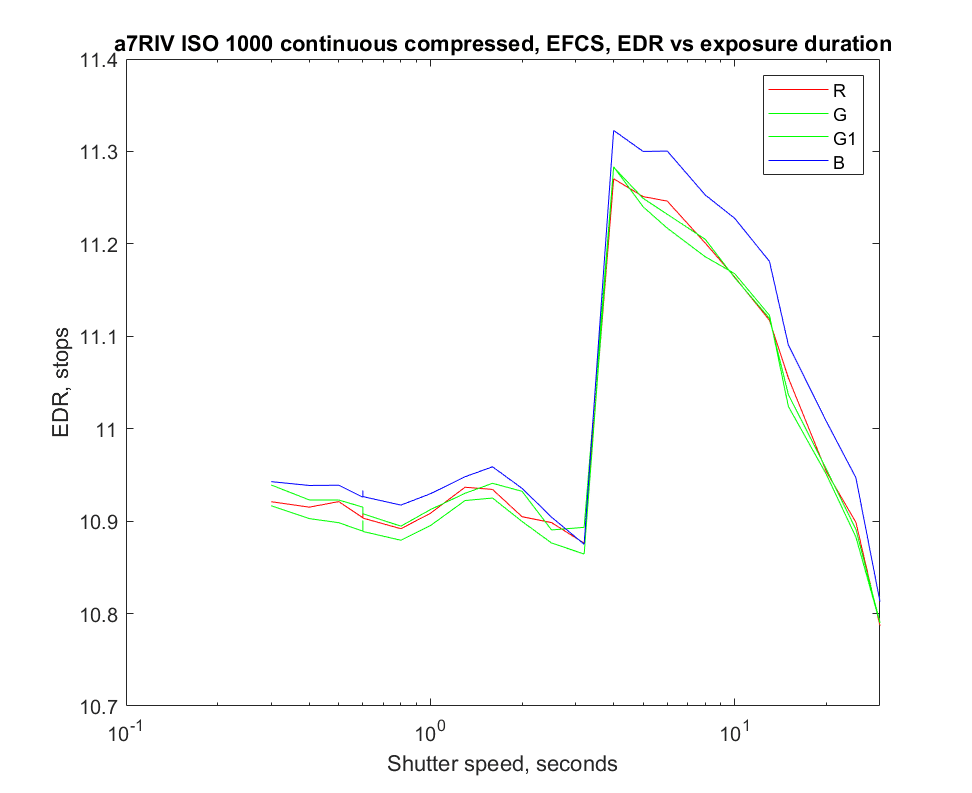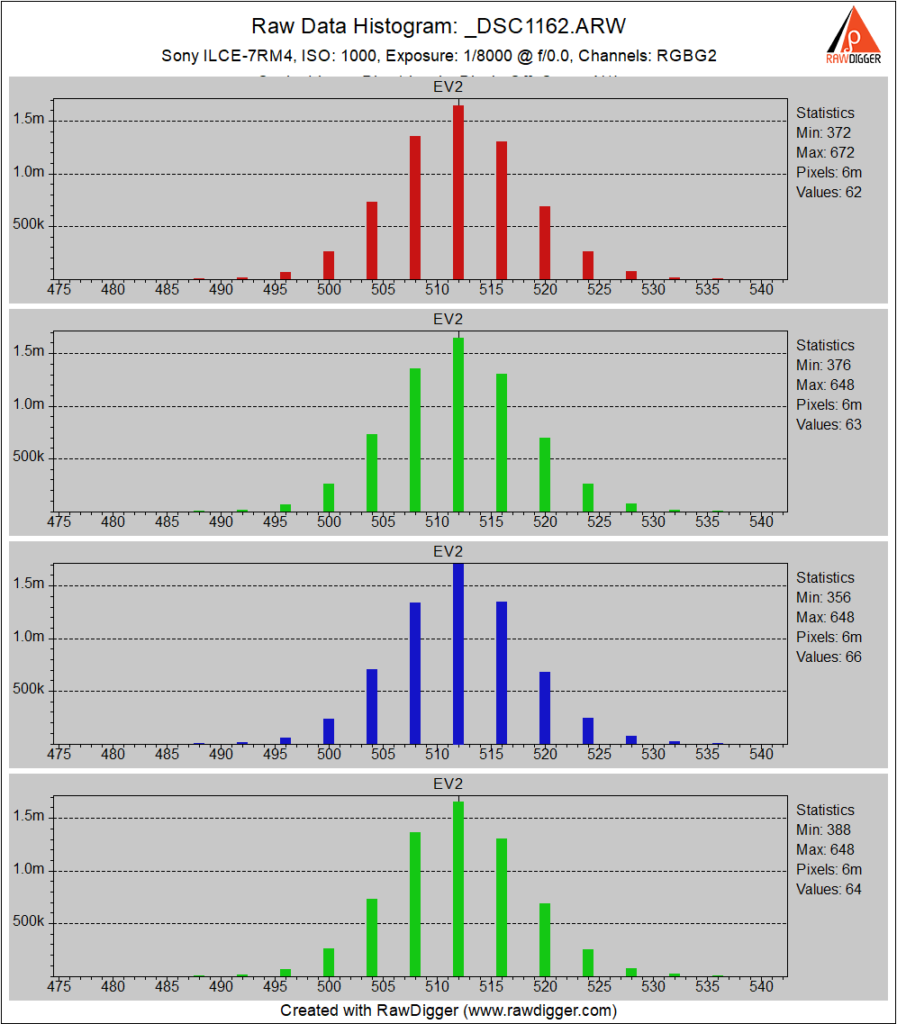This is one in a series of posts on the Sony alpha 7 R Mark IV (aka a7RIV). You should be able to find all the posts about that camera in the Category List on the right sidebar, below the Articles widget. There’s a drop-down menu there that you can use to get to all the posts in this series; just look for “A7RIV”.
When you set the shutter drive mode to continuous, and the raw file format to compressed, the a7RIV operates with 12 bits of precision rather than the usual 13 bits in single shot compressed or 14 bits in single shot compressed or uncompressed. I’ll show you some histograms at the end of this post, but for now just take my word for it. One consequence of reducing the precision is faster conversion of the image data, and a higher frame rate. That’s the good news. The bad news is that the noise goes up and the dynamic range goes down. Here’s the effect on the engineering dynamic range (EDR) which for the purpose of this and most of my posts, I’m defining as full scale over the read noise (the DR when the SNR threshold is 0).
Here’s how the EDR changes with ISO setting at 1/1000 second:
And here’s how that EDR compares with the camera set to record uncompressed raw files:
At lower ISOs, there’s roughly a one stop impact.
Now let’s look at how the EDR changes with shutter speed at ISO 1000:
Just like when the camera is in uncompressed mode, or compressed single shot mode, the “star eater” algorithm switches in at shutter speed of 3.2 seconds and above. Putting the camera in this mode was a star eater workaround in the a7RII, but Sony shut that door in the a7RIII. Looks like it’s still closed.
Here’s an ISO 100 histogram:
Only every 4th bucket is occupied. That’s a smoking gun that the precision is 12 bits.




In response to a question, I checked whether this affects continuous bracketing. It does. In continuous bracketing, if compression is used, the precision is 12 bit. If it’s not used, the precision is 14 bits.
It is my understanding that Sony specifies 15 stops dynamic range in regular mode. After all, DXO measures dynamic range of 14.7 EV for aiii (Z 7 measures 14.6 EV). Of course other measure it much less, as they measure it differently.
I consider that Sony spec entirely bogus. It is possible to get close to it if you measure EDR and scale it to a much smaller image, but what’s the relevance of that? If you’re going to look at same-sized prints, why not use photographic dynamic range?